Recently here on The OT Toolbox, we’ve talked a lot about sensory processing needs and how strategies can be incorporated into the child’s environment. These tactics provide an authentic and meaningful sensory strategy for incorporating much-needed sensory input right into a child’s environment. It’s all part of creating a sensory lifestyle for a child!
Today, we’re talking about the connection between attention and sensory.
Attention and Sensory are Connected
Attention is a big challenge for kids. Distractions occur in the home, community, classroom, and everywhere a child goes! When attention interferes with learning, performance of functional tasks, or creates unsafe situations, it can be a real problem. But did you ever stop to think about how attention is so very related to sensory processing?
Related read: Here are more executive functioning resources to fill your therapy toolbox!
Related read: Here are more executive functioning resources to fill your therapy toolbox!
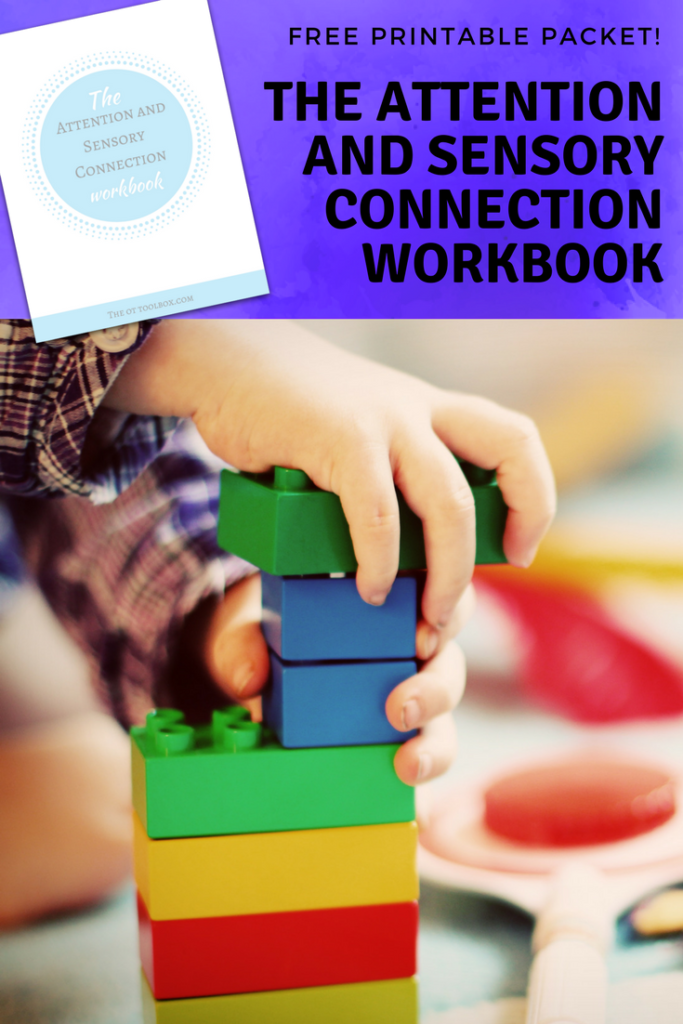
Our children with sensory challenges know the struggle of inattention. Parents, teachers, and therapists know that sensory processing challenges interfere with a child’s ability to attend. They may be so focused on a specific sensory input or need that they don’t notice when someone has called their name. Or, they may be so fearful in anticipation of a light touch that they miss what’s happening right in front of them.
Sensory meltdowns can happen in the blink of an eye. They don’t always look like a flurry of kicking, hitting, or yelling. A sensory meltdown can look like distraction or inattentiveness, too.
You may have seen this video floating around on Facebook. Here’s the thing: Attention and sensory challenges are connected. Sound familiar?
Sensory meltdowns can happen in the blink of an eye. They don’t always look like a flurry of kicking, hitting, or yelling. A sensory meltdown can look like distraction or inattentiveness, too.
You may have seen this video floating around on Facebook. Here’s the thing: Attention and sensory challenges are connected. Sound familiar?
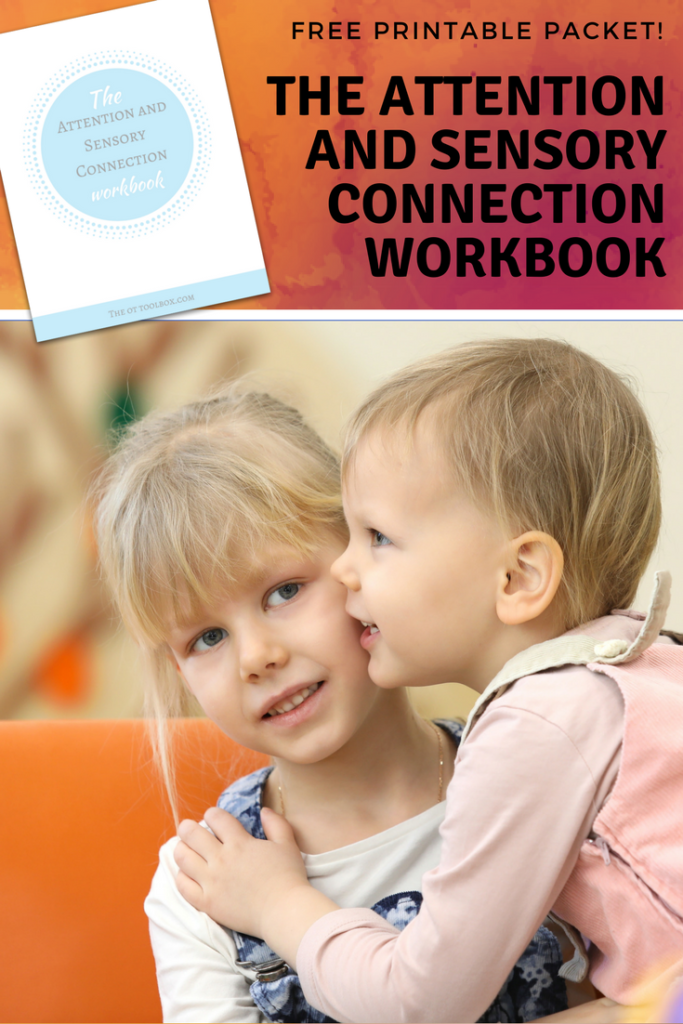
As a parent, teacher, or therapist working with these children, we can find it difficult to address the underlying needs so that a child is able to pay attention to their classroom, or to a passing car.
We need to figure out strategies that meet the child’s needs in motivating and natural ways within the environment. Lack of attention span and undesirable responses to sensory input can lead to frustrated teachers, and challenged parents. Distractions from external and internal stimuli can lead to responses that look a lot like behaviors.
What if we could treat the underlying issues, resulting in increased focus and attention?
That’s where the Attention and Sensory Connection Workbook can help.
It’s a FREE one-stop spot for information on the basics of how attention is related to sensory processing. It provides tips to boost attention through the senses so that kids can learn, focus, and pay attention when they need to.
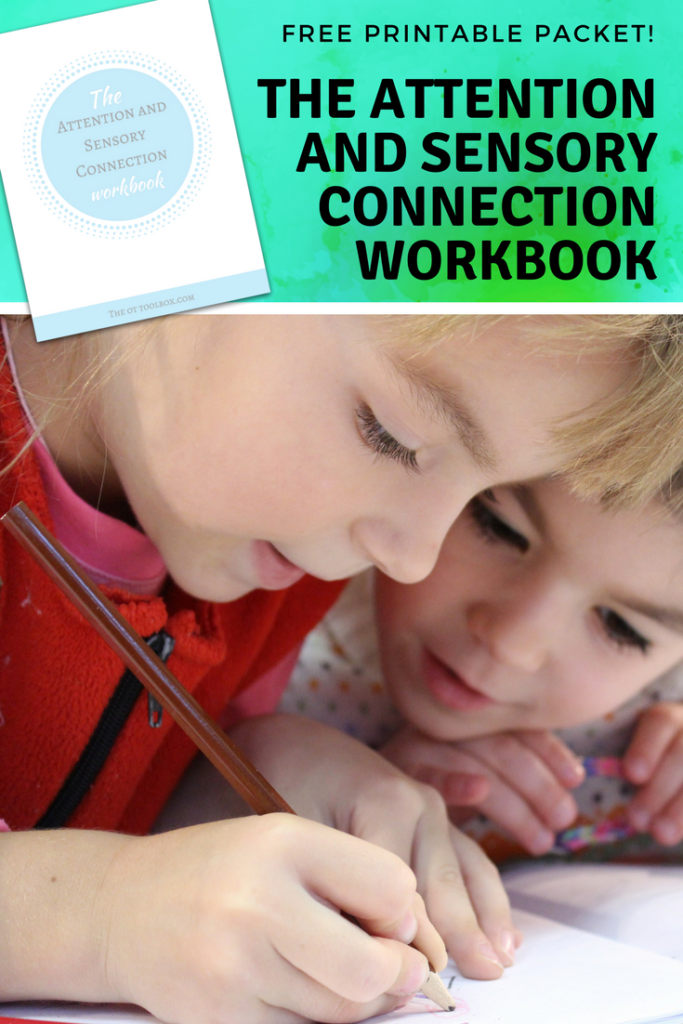
The workbook covers information about how impaired sensory processing relates to attention issues in a variety of ways and provides movement and sensory-motor activities that can help boost attention.
There are specific activity ideas and tactics to address attentiveness. You’ll also find workbook pages that can be used to identify underlying sensory-related areas that impact attention and tools for addressing those needs.
This workbook is a guide for better focus at home or in the classroom. The Attention and Sensory Workbook contains:
- How Sensory and Attention are Connected
- The Impact of Sensory Processing on Learning
- Movement and Sensory-Motor Activities to Improve Attention
- Sensory Activity Ideas
- Sensory Processing Workbook Pages
- Attention and Sensory Activity Workbook Pages
This is an ideal tool to add to any sensory lifestyle! And it’s free!
Using specific and prescribed sensory strategies like those in a sensory diet can be a huge help for the child who struggles with attention and sensory issues. A sensory diet can be the ticket to improved attention when the strategies work and are carried over appropriately.
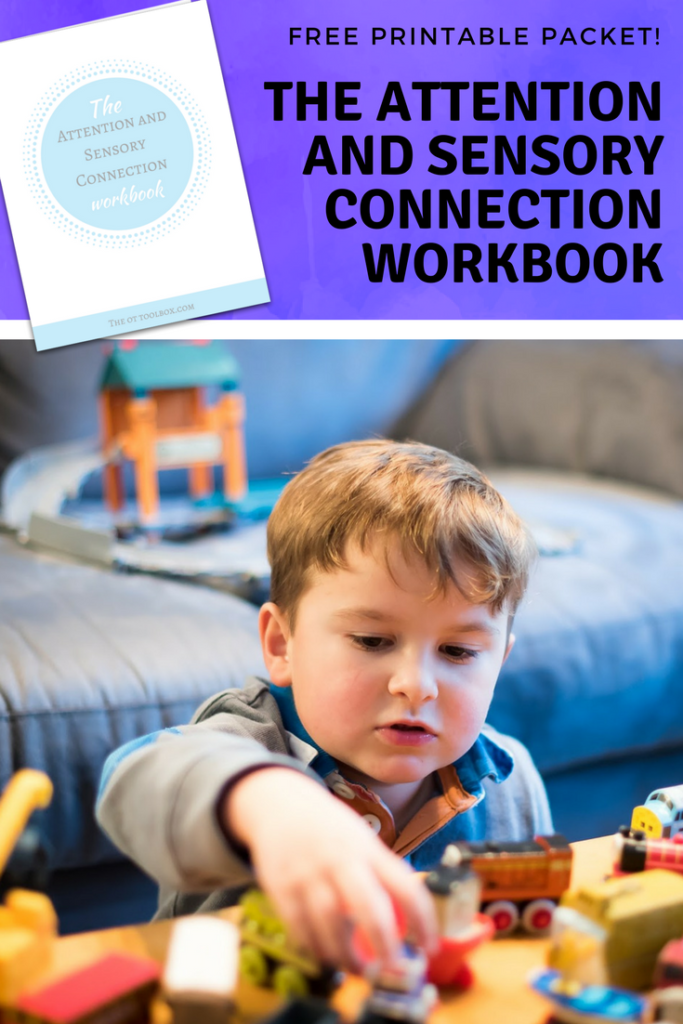
A sensory diet that focuses on organizing vestibular and proprioceptive input can help a child regulate in order to focus in a classroom lecture. An outdoor recess with calming and alerting input can help a child focus in their afternoon classes. When sensory strategies are incorporated into a child’s environment in meaningful manners, a sensory lifestyle occurs.
Here are a few ways that The Attention and Sensory Connection Workbook can address much-needed skills of our children/students/clients with sensory needs:
-
Sensory processing is the ability to register, screen, organize, and interpret information from our senses and the environment. This process allows us to filter out some unnecessary information so that we can attend to what is important. Kids with sensory challenges often time have difficulty with attention as a result.
-
It’s been found that there is a co-morbidity of 40-60% of ADHD and Sensory Processing Disorder. This workbook is an actionable guide to help teachers, therapists, and parents to help kids boost attention and focus in the classroom by mastering sensory processing needs.
-
You will find information on the sensory system and how it impacts attention and learning. There are step-by-step strategies for improving focus, and sensory-based tips and tricks that will benefit the whole classroom.
-
The workbook provides tactics to address attention and sensory processing as a combined strategy and overall function. There are charts for activities, forms for assessment of impact, workbook pages for accommodations, and sensory strategy forms.
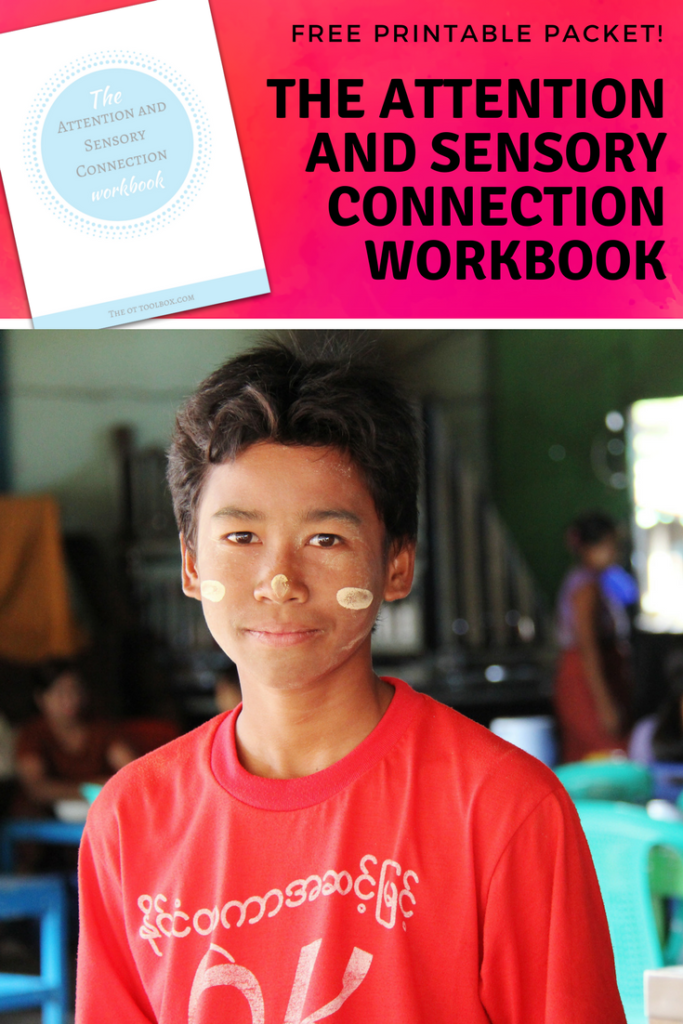
It’s been fun sharing all off these free resources with you recently. What’s awesome is that the tools you’ve accessed can be used to create a sensory lifestyle that is meaningful, authentic, and motivating for kids, in all aspects of a child’s day!
Click here to grab the Attention and Sensory Workbook.
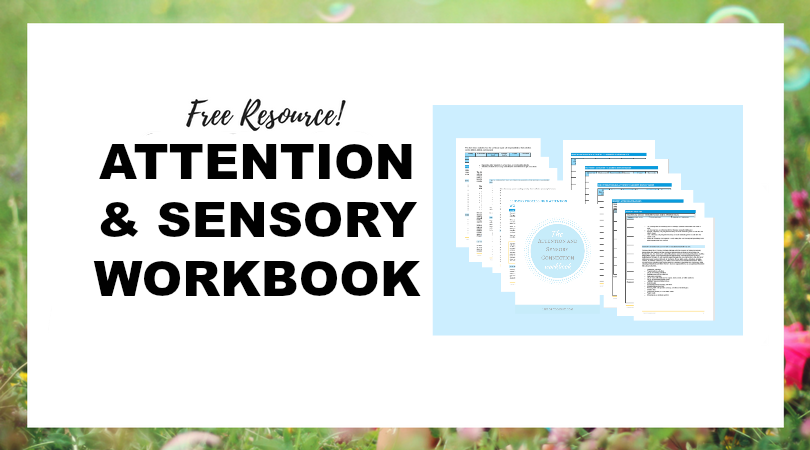

Colleen Beck, OTR/L has been an occupational therapist since 2000, working in school-based, hand therapy, outpatient peds, EI, and SNF. Colleen created The OT Toolbox to inspire therapists, teachers, and parents with easy and fun tools to help children thrive. Read her story about going from an OT making $3/hour (after paying for kids’ childcare) to a full-time OT resource creator for millions of readers. Want to collaborate? Send an email to contact@theottoolbox.com.
New Feature...DOWNLOAD THIS POST AS A PDF! CLICK HERE






